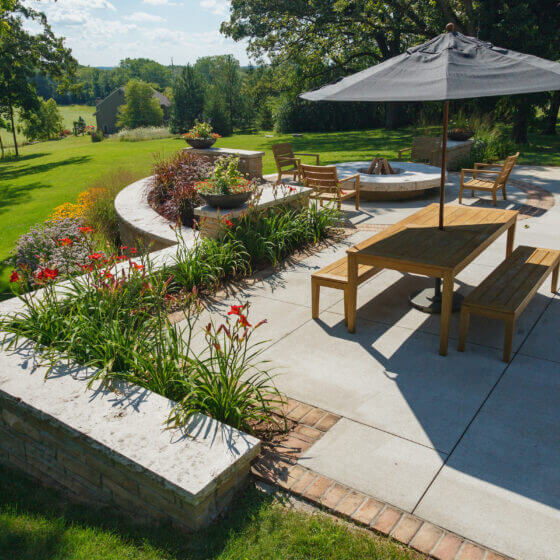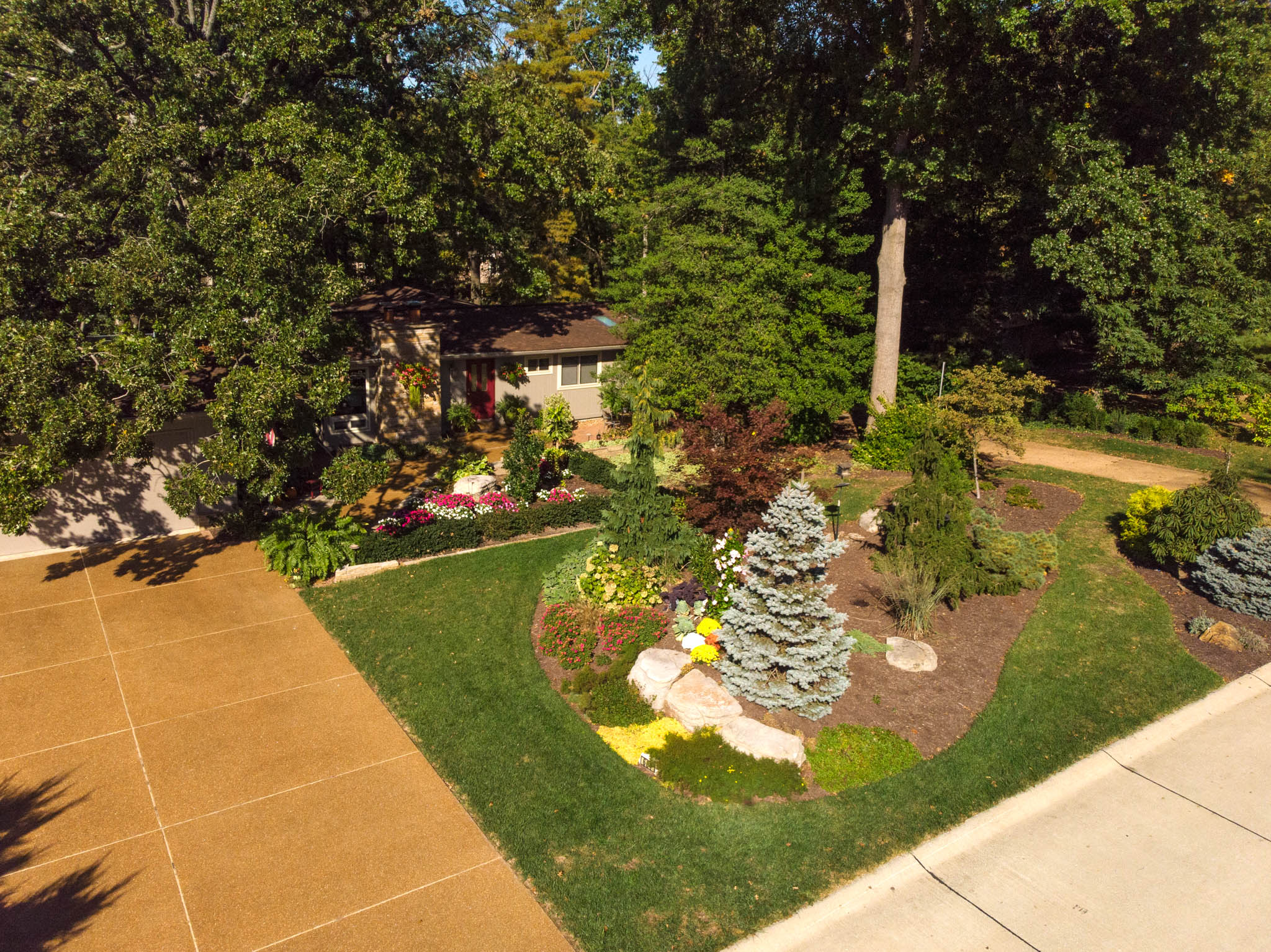Landscape Lighting Installer Tips for Creating Stunning Nighttime Ambiance
Wiki Article
Exploring Various Types of Landscape Design to Enhance Your Outdoor Setting
Landscaping plays an essential function in specifying outside spaces. Numerous styles, from traditional yards to modern-day minimalist designs, provide distinctive benefits for boosting visual appeals and feature. Incorporating components like xeriscaping and native plants can add to ecological equilibrium. Understanding the interaction of hardscape and softscape is important for developing inviting settings. The options readily available can be overwhelming, motivating one to assess which design ideal straightens with their vision for an outdoor shelter.Traditional Garden Landscape Design

While many modern-day gardens embrace minimalism and indigenous plantings, typical garden landscaping continues to be a treasured method that stresses balance, framework, and ornamental attributes. This style often includes formal geometric formats, where flowerbeds, bushes, and pathways are organized with accuracy. Central focal factors, such as water fountains or sculptures, draw the eye and supply a feeling of harmony.Traditional landscaping regularly consists of a variety of plant kinds, showcasing seasonal blooms and evergreen elements. Timeless hedges, perennials, and annuals create vivid shades and textures throughout the year. In addition, arches, trellises, and pergolas include vertical passion and act as assistance for climbing up plants, enhancing the general aesthetic.The usage of all-natural materials, such as stone and timber, more enriches the standard landscape, adding to a timeless high quality. Inevitably, this design invites leisure and satisfaction, making it a beloved option for those looking for a stunning exterior setting.
Modern Minimalist Landscaping
Modern minimal landscape design stresses simpleness and performance, characterized by clean lines and open areas. Secret features consist of a minimal plant scheme and thoughtful hardscape design that prioritizes usability and aesthetic appeal. Effective plant selection techniques better boost the minimal strategy, producing tranquil outdoor environments that encourage leisure and consideration.Key Attributes of Minimalism
A growing pattern in landscaping is the accept of minimalism, defined by simpleness and performance. Minimalist landscaping concentrates on tidy lines, open areas, and a limited shade scheme, advertising a sense of serenity. Elements are thoroughly curated to avoid mess, permitting each part to stick out. Using natural materials, such as stone and timber, boosts the organic feel while keeping an aesthetic balance. In addition, minimal designs frequently incorporate geometric forms, which can produce aesthetic passion without overwhelming the senses. Water attributes might be included, offering as centerpieces that enhance serenity. Overall, minimalism in landscape design highlights the charm of restriction, allowing nature's integral high qualities to beam through in a harmonious outdoor atmosphere.Plant Selection Strategies
Efficient plant selection is vital for achieving the wanted aesthetic in contemporary minimalist landscaping. The emphasis ought to get on simplicity, utilizing a minimal combination of plants that enhance each other and the surrounding setting. Native plants are usually suitable, as they need much less maintenance and water, advertising sustainability. Choosing varieties with differing structures and heights can include aesthetic rate of interest without overwhelming the room. Organizing plants in collections instead of spreading them improves cohesion and reinforces the minimalist style. Evergreen varieties can give year-round structure, while seasonal blooms introduce refined color adjustments. Ultimately, the objective is to develop a serene outside area that personifies tranquility and harmony with thoughtful plant selections.Hardscape Design Principles
Crucial elements in hardscape design considerably add to the total aesthetics and functionality of minimalist landscape design. This layout technique stresses clean lines and understated materials, creating a minimalist aesthetic experience. Trick parts consist of pathways, patios, and retaining wall surfaces, which not just define spaces but additionally boost availability and functionality. The use of products such as concrete, stone, and wood prevails, showing a natural yet modern visual. Integrating balanced designs and geometric shapes further enhances the minimal viewpoint, allowing for an unified mix with surrounding plant. Furthermore, correct drainage and disintegration control are necessary considerations, ensuring durability and sustainability. Ultimately, efficient hardscape style works as a foundation that complements softscape aspects while keeping balance and simpleness in outdoor settings.
Cottage-Style Landscaping
Cottage-style landscape design offers a wonderful approach to producing welcoming outdoor rooms. By incorporating captivating plant mixes, this style promotes a feeling of warmth and fancifulness. The emphasis on relaxing, well-defined areas encourages leisure and enjoyment of nature.Enchanting Plant Mixes
Although lots of homeowners seek to produce an attractive outdoor area, attaining the charm of cottage-style landscaping often rests on thoughtful plant mixes. Vibrant blooms, rich foliage, and fragrant natural herbs can be artfully matched to stimulate a feeling of fancifulness and fond memories. Integrating lavender, sissies, and foxgloves develops a vivid tapestry that brings in pollinators while giving a delightful scent. Including decorative yards like miscanthus can include appearance and activity, enhancing the softer blossoms. Furthermore, blending perennial and annual plants warranties continual shade throughout the seasons. Using climbers, such as clematis or honeysuckle, can enhance vertical interest. Overall, these mixes not just improve the landscape however likewise promote a bewitching and welcoming environment.
Comfy Outdoor Areas
Developing cozy outside rooms requires a cautious mix of convenience and beauty, complementing the lively plant mixes located in cottage-style landscaping - Bbq Island Installation. These locations frequently feature inviting seating plans, such as weather-beaten wood benches or supported chairs bordered by lavish plant. Soft lights, like fairy lights or lanterns, adds warmth, transforming the area into a serene hideaway. Including components such as trellises adorned with climbing roses or fragrant natural herbs boosts sensory experiences. Additionally, paths constructed from rustic rocks welcome expedition and link with nature. Attractive touches like birdbaths or wayward garden art contribute to a sense of whimsy. Ultimately, the goal is to produce a charming environment that urges leisure and enjoyment of the charm surrounding these comfortable outside placesXeriscaping for Water Conservation
Exactly how can neighborhoods balance aesthetic landscape design with the pushing demand for water preservation? Xeriscaping arises as a feasible remedy, promoting sustainable techniques that decrease water usage while enhancing exterior appeal. This landscaping method concentrates on utilizing drought-resistant plants native to the region, which call for substantially less water than traditional yards. By integrating mulch and reliable watering systems, xeriscaping reduces dissipation and overflow, further preserving valuable water resources.Communities can create aesthetically appealing landscapes via cautious planning, picking a diverse array of appearances and colors that thrive in dry conditions. Additionally, xeriscaping urges the use of ornamental rocks and attractive gravel, providing practical and appealing choices to yard yards. As neighborhoods accept this green technique, they not only reduce their water consumption however also advertise biodiversity and strength in their local ecological communities. Eventually, xeriscaping functions as a presentation of the consistency in between aesthetic appeal and ecological responsibility.Hardscape Style Components
Hardscape design aspects play an important function in boosting outdoor areas by giving structure and functionality. These non-plant functions, such as patio Grill Islands areas, decks, wall surfaces, and pathways, develop aesthetic passion while serving useful functions. Using products like brick, stone, and concrete, hardscaping contributes to the general visual allure and longevity of a landscape.Incorporating hardscape elements can define areas within a lawn, directing movement and encouraging social interaction. A well-placed pathway can connect different sections of the yard, while preserving walls can manage elevation changes and prevent erosion.Furthermore, hardscape style can boost access and safety, supplying stable surface areas for lounging or walking. Reliable assimilation of hardscape parts enhances soft landscape design, making certain a well balanced exterior environment. Ultimately, thoughtful hardscape design improves not just the elegance of outside areas however likewise their functionality, making them much more welcoming and functional for visitors and property owners alike.Exterior Living Areas
While outdoor home use a seamless mix of comfort and nature, they function as necessary extensions of a home, improving lifestyle and recreation. These areas can consist of patios, decks, or outside kitchens, made to foster leisure and home entertainment. Outdoor Lighting Installer. By integrating functional furniture and stylish decoration, homeowners produce welcoming atmospheres for celebrations or quiet evenings.The combination of color structures, such as awnings or pergolas, safeguards versus the aspects while keeping an open feeling. Fire pits and outdoor heating units expand usability right into cooler months, giving warmth and atmosphere. In addition, incorporating illumination attributes enhances the area's use after sundown, creating a wonderful night atmosphere.Landscaping elements, such as pathways and borders, better define these areas, leading movement and adding visual appeal. Ultimately, exterior living spaces transform backyards into flexible hideaways, advertising a lifestyle that embraces both nature and comfortIndigenous Plant Landscape Design
Indigenous plant landscape design stresses making use of aboriginal flora to create sustainable and harmonious outdoor environments. This approach not just boosts biodiversity yet additionally preserves water and lowers the need for chemical plant foods and chemicals. By choosing plants that are indigenous to a certain area, house owners can ensure that their landscapes are well-adapted to neighborhood soil and climate conditions, resulting in lower maintenance requirements.Additionally, native plants provide important habitats for local wildlife, consisting of birds, butterflies, and bees, advertising ecological health. Landscape designs that include these plants often feature naturalistic formats that simulate regional ecological communities, cultivating a local color and link to the environment.Furthermore, indigenous plant landscape design can add to soil stability and disintegration control, making it an eco liable option. In general, this practice not just improves outside spaces yet likewise supports the regional community, creating a lasting balance in between human activity and nature.
Often Asked Concerns
Just How Can I Pick the Right Landscape Design Design for My Home?
Choosing the right landscaping style for a home involves assessing the residential property's style, environment, and individual preferences. Bbq Island Installation. Looking into numerous designs and seeking advice from experts can supply support to produce a harmonious outdoor space customized to specific requirementsWhat Is the Typical Expense of Professional Landscaping Providers?
The ordinary expense of expert landscaping solutions typically varies from $1,000 to $5,000, relying on job area, dimension, and complexity. Homeowners need to take into consideration acquiring multiple quotes to assure they receive reasonable prices and quality solution.Exactly how Typically Should I Maintain My Designed Yard?
The regularity of maintaining a designed yard typically relies on the plants and functions present. Generally, regular maintenance every couple of weeks is encouraged, with seasonal tasks raising in frequency throughout height growing periods for optimal health and visual appeals.Are There Landscaping Alternatives for Little Urban Spaces?

Numerous landscaping choices exist for tiny metropolitan rooms, including upright yards, container plants, and rooftop yards. Including these aspects can maximize restricted locations while offering plant, boosting looks, and boosting air quality in urban atmospheres.
What Plant kingdom Are Ideal for Bring In Neighborhood Wildlife?
The most effective plants for drawing in regional wild animals consist of indigenous blooming species, berry-producing shrubs, and diverse grasses. These plants offer necessary food and environment, cultivating a thriving ecosystem that supports various birds, insects, and small animals. Numerous property owners seek to create a picturesque outdoor space, achieving the beauty of cottage-style landscape design often pivots on thoughtful plant mixes. Developing relaxing outside areas requires a careful mix of convenience and appeal, matching the dynamic plant combinations found in cottage-style landscaping. Indigenous plant landscape design stresses the usage of native plants to produce harmonious and lasting exterior settings. Landscape makes that include these plants typically feature naturalistic designs that simulate regional ecosystems, promoting a sense of place and link to the environment.Furthermore, native plant landscaping can add to soil security and erosion control, making it an environmentally liable choice. Various landscaping alternatives exist for little urban areas, including upright gardens, container plants, and roof gardens.Report this wiki page